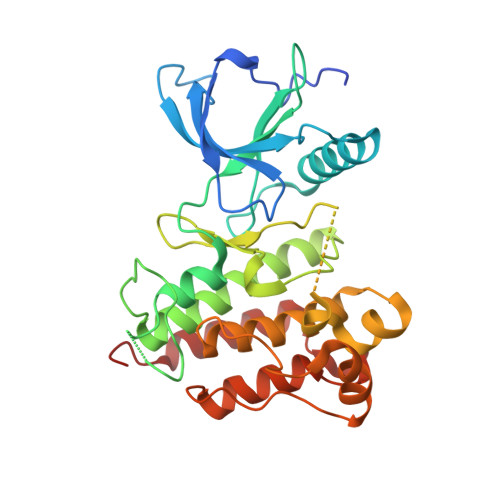The 1.65 angstrom resolution structure of the complex of AZD4547 with the kinase domain of FGFR1 displays exquisite molecular recognition.
Yosaatmadja, Y., Patterson, A.V., Smaill, J.B., Squire, C.J.(2015) Acta Crystallogr D Biol Crystallogr 71: 525-533
- PubMed: 25760602
- DOI: https://doi.org/10.1107/S1399004714027539
- Primary Citation of Related Structures:
4WUN - PubMed Abstract:
The fibroblast growth factor receptor (FGFR) family are expressed widely in normal tissues and play a role in tissue repair, inflammation, angiogenesis and development. However, aberrant signalling through this family can lead to cellular proliferation, evasion of apoptosis and induction of angiogenesis, which is implicated in the development of many cancers and also in drug resistance. The high frequency of FGFR amplification or mutation in multiple cancer types is such that this family has been targeted for the discovery of novel, selective drug compounds, with one of the most recently discovered being AZD4547, a subnanomolar (IC50) FGFR1 inhibitor developed by AstraZeneca and currently in clinical trials. The 1.65 Å resolution crystal structure of AZD4547 bound to the kinase domain of FGFR1 has been determined and reveals extensive drug-protein interactions, an integral network of water molecules and the tight closure of the FGFR1 P-loop to form a long, narrow crevice in which the AZD4547 molecule binds.
Organizational Affiliation:
School of Biological Sciences, The University of Auckland, Private Bag 92019, Auckland, New Zealand.















